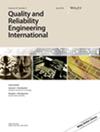在混合 FMECA 中整合模糊逻辑和多标准决策,实现稳健的风险优先排序
IF 2.8
3区 工程技术
Q3 ENGINEERING, INDUSTRIAL
引用次数: 0
摘要
故障模式影响和临界分析(FMECA)被各行各业广泛应用于识别和减少可能出现的故障。尽管 FMECA 被广泛使用,但在决策过程中仍会遇到挑战。本文创建了一个新的基于复原力的模糊 RPN 模型,用于开发 FMECA 方法。该模糊模型通过纳入频率、严重性和检测之外的因素,超越了传统风险优先级数字计算的局限性。这一扩展包括了影响系统成本、可持续性和安全性的因素,从而提供了更全面的风险评估。此外,为了让决策者产生信任感,建议采用一种稳健的评估方法,将三种方法结合起来。在初始阶段,使用模糊层次分析法和灰色关系分析法来确定不同风险因素的主观权重,并解决与构建的模糊推理规则缺陷相关的问题。在第二阶段,采用熵方法来处理计算出的单个权重的不确定性,并捕捉专家的不同冲突观点。所建议的方法通过涉及燃气轮机的案例研究进行了验证。结果表明,不同方法在故障模式优先级排序方面存在显著差异。MTTR 的引入解决了传统 FMECA 的关键缺陷,增强了预测能力。此外,混合方法改进了关键性评估和失效模式排序,将失效模式分为 15 类,有助于决策和应用适当的风险缓解措施。总之,研究结果验证了所提出的方法在解决复杂系统风险评估的不确定性和专家判断分歧方面的有效性。本文章由计算机程序翻译,如有差异,请以英文原文为准。
Integrating fuzzy logic and multi‐criteria decision‐making in a hybrid FMECA for robust risk prioritization
Failure mode effects and criticality analysis (FMECA) is widely employed across industries to recognize and reduce possible failures. Despite its extensive usage, FMECA encounters challenges in decision‐making. In this paper, a new fuzzy resilience‐based RPN model is created to develop the FMECA method. The fuzzy model transcends the limitations associated with traditional risk priority number calculations by incorporating factors beyond frequency, severity, and detection. This extension includes considerations impacting system cost, sustainability, and safety, providing a more comprehensive risk assessment. In addition, to create trust in decision‐makers, a robust assessment approach is suggested, integrating three methodologies. In the initial phase, the fuzzy analytical hierarchy process and the grey relation analysis method are used to determine the subjective weights of different risk factors and resolve the flaws associated with the deficiency of constructed fuzzy inference rules. In the second phase, an entropy method is applied to handle the uncertainty of individual weightage calculated and capture different conflicting experts' views. The suggested approach is validated through a case study involving a gas turbine. The results demonstrate significant differences in failure mode prioritization between different approaches. The introduction of MTTR addresses critical shortcomings in traditional FMECA, enhancing predictive capabilities. Furthermore, the hybrid approach improved criticality assessment and failure mode ranking, classifying failure modes into fifteen categories, aiding decision‐making, and applying appropriate risk mitigation measures. Overall, the findings validate the efficacy of the proposed approach in addressing uncertainties and divergent expert judgments for risk assessment in complex systems.
求助全文
通过发布文献求助,成功后即可免费获取论文全文。
去求助
来源期刊
CiteScore
4.90
自引率
21.70%
发文量
181
审稿时长
6 months
期刊介绍:
Quality and Reliability Engineering International is a journal devoted to practical engineering aspects of quality and reliability. A refereed technical journal published eight times per year, it covers the development and practical application of existing theoretical methods, research and industrial practices. Articles in the journal will be concerned with case studies, tutorial-type reviews and also with applications of new or well-known theory to the solution of actual quality and reliability problems in engineering.
Papers describing the use of mathematical and statistical tools to solve real life industrial problems are encouraged, provided that the emphasis is placed on practical applications and demonstrated case studies.
The scope of the journal is intended to include components, physics of failure, equipment and systems from the fields of electronic, electrical, mechanical and systems engineering. The areas of communications, aerospace, automotive, railways, shipboard equipment, control engineering and consumer products are all covered by the journal.
Quality and reliability of hardware as well as software are covered. Papers on software engineering and its impact on product quality and reliability are encouraged. The journal will also cover the management of quality and reliability in the engineering industry.
Special issues on a variety of key topics are published every year and contribute to the enhancement of Quality and Reliability Engineering International as a major reference in its field.

 求助内容:
求助内容: 应助结果提醒方式:
应助结果提醒方式:


